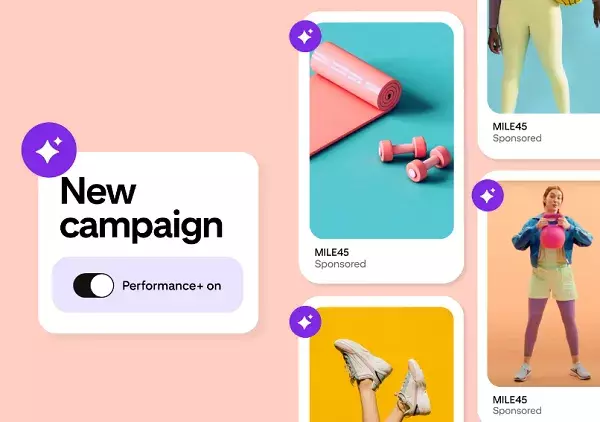In the fiercely competitive landscape of digital advertising, platforms continuously innovate to retain advertisers’ attention and maximize returns on investment. Pinterest, traditionally known for its visual discovery and inspiration capabilities, has introduced a significant shift in its ad campaign strategy. With the launch of the Performance+ suite, Pinterest aims to streamline the ad creation process by incorporating advanced AI elements that promise to enhance campaign effectiveness. This move aligns with trends seen across platforms like Meta, showcasing the rapid evolution of advertising technologies and techniques.
Pinterest’s Performance+ offers a comprehensive approach to ad management, consolidating various functions into a user-friendly suite. It utilizes AI and machine learning to automate critical components of the advertising process, including audience targeting, budget allocation, bidding strategies, and even ad creation. The ability to deploy a fully automated ad campaign signifies Pinterest’s commitment to providing its users with sophisticated tools that can simplify complex marketing processes while promising improved metrics. Advertisers can select specific objectives—whether consideration, conversions, or catalog sales—and let the AI optimize their campaigns accordingly.
While automation can drive efficiencies and improve performance, it raises essential questions about control and trust. Pinterest has acknowledged the apprehension surrounding full automation and thus offers users the flexibility to retain oversight over certain elements of their campaigns. This hybrid approach is critical; it allows advertisers to leverage advanced AI capabilities without entirely relinquishing agency in their marketing strategies. Notably, early testing phases have reported positive outcomes, with many advertisers experiencing at least a 10% improvement in key performance indicators such as cost per acquisition (CPA) and cost per click (CPC). Such results could encourage advertisers to gradually embrace the AI-driven approach, though skepticism may linger.
The ability to optimize campaigns for the highest return on ad spend (ROAS) adds another layer of complexity and sophistication to Pinterest’s offering. This move recognizes that advertisers are not just interested in driving traffic or conversions; they also strive for greater profitability. By extending Performance+ bidding capabilities to include ROAS optimization, Pinterest positions itself as a platform that not only facilitates traffic but also ensures that the traffic it generates is of the highest quality. In the context of an evolving economy where every marketing dollar counts, this focus on financial efficiency is timely and relevant.
Another intriguing aspect of the Performance+ suite is its commitment to facilitating the connection between brands and consumers through personalized promotions. As shopping habits evolve, especially during high-traffic periods like the holiday season, attracting the right audience with tailored deals can be a game-changer for brands. By serving up relevant discounts and offers based on users’ prior searches and pins, marketers can exploit Pinterest’s unique ability to influence consumer buying behavior. The addition of Deals ads modules aims to enhance this visibility further, allowing brands to effectively highlight their promotions within the busy flow of users’ Home Feeds.
As Pinterest gears up for the holiday shopping season, ads underlined with AI-driven insights will potentially offer brands new avenues for product discovery. This reflects not only a methodological shift in how ads are created and targeted but also signifies a transformation in consumer-brand interactions. Brands can register relevant promotions through their Pinterest contacts, tailoring their approach to resonate more profoundly with Pinners. This is especially important in a marketplace increasingly driven by user experience and connection.
With the introduction of the Performance+ suite, Pinterest is not only modernizing its advertising approach but also redefining the advertising ecosystem. As brands navigate the complexities of digital marketing amidst fluctuating consumer behavior, the strategic use of AI and automation will likely play a decisive role in their success. While concerns about control remain, the potential for enhanced performance metrics and engagement cannot be overlooked. As advertisers embrace these innovations, it will be fascinating to observe how this impacts their campaigns and the broader landscape in the coming months.


Leave a Reply